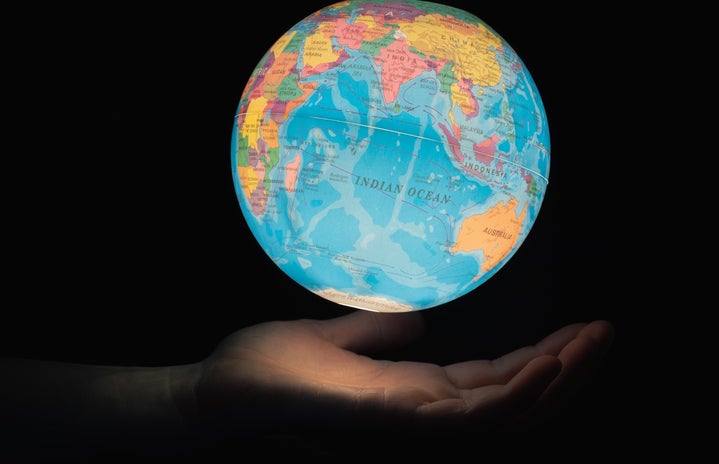As Black Panther: Wakanda Forever has dominated the box office since its release a couple of weeks ago. The franchise itself has been known to be a symbolic movie in the industry for Black representation. However, it’s also done one truly incredible thing: shining the light on the beautiful continent of Africa.
I can remember the first time I went to watch the first Black Panther movie. I went with my friend and her little sister on opening night. Since we are all African, we wore African clothing from our own countries to watch the film —mine being Eritrean and theirs being Nigerian. I’d never seen so many people who look like me in a movie theatre before, but I realized at that moment that this movie wasn’t just a regular movie. It was a movie showing everyone the beauty of African cultures from every country on the continent.
The franchise shows how important Africa is in different ways—from languages, music and clothing—all while enhancing an interesting storyline.
Although the country of Wakanda isn’t a real place, the language they speak is an actual language within a tribe in a country. They speak isiXhosa, which is the Bantu language of the Xhosa and one of the official languages in South Africa and Zimbabwe. Many may not know the importance that this language carries, yet they should. The language is associated with the fight against white colonizers, especially in the Eastern Cape Province where South Africans were most oppressed and living in poverty. The people of Xhosa were the ones who had a century-long battle fighting against the European colonial invaders in the Frontier Wars.
One thing that keeps cultures alive is language, and the fear of that being wiped away due to oppression is a huge one. However, having a language that relates back to the fight against colonizers is important in a film that’s all about Black power.
Music plays an important role in the film, and it plays an important role in Africa. The soundtrack of the recent film within the franchise has Nigerian artists like Burna Boy, Tems, Rema, Ckay and Fireboy DML. They also have South African artists DBN Gogo, Sino Msolo, Kamo Mphela, Young Stunna and Busiswa. Not only do they have African artists, but they have African artists from other continents, such as British-Ghanaian rapper Stormzy and Nigerian-American hip-hop act Tobe Nwigwe. The importance of having artists who come from Africa on the soundtrack is that it feels almost more personal to the storyline of the film.
In an interview with Music in Africa, Swedish composer Ludwig Göransson, who worked on the original score, said, “Thematically, we wanted to move the audience from grief to celebration. When you listen to the soundtrack, you can close your eyes and relive the experience of the movie. That was the intention.”
In my opinion, that’s exactly what the soundtrack of Black Panther: Wakanda Forever does. The soundtrack takes you on a journey of whatever emotions you are feeling at that exact moment. You may feel a sense of grief at one moment and then a feeling of hopefulness at another point in time. The melodies and beats of the songs really cater to the lyricism and emotions that each artist hoped to portray.
One of my favourite things that I saw while watching both films was the beauty in the traditional clothing worn. The colours and details within each piece of clothing were admirable. This is all thanks to Ruth E. Carter, who designed the costumes for both films and won an Oscar for Best Costume Design for the first movie (the first African-American to do so too)!
One aesthetic that was weaved in costumes was the aesthetic of Afrofuturism. According to an article by The Seattle Times, Afrofuturism is known to showcase the African diaspora as a cultural and creative movement while imagining a world where those who have descended from Africa play a central role in this world’s creation.
Although Carter’s creation of the costumes had the touch of Afrofuturism, it also captures inspiration from many African cultures.
The Maasai people play a role in how the Dora Milaje (the female army of Wakanda) dress. The costumes for the army are inspired by the red clothing, large spears, rings of necklaces and metal bangles of the ethnic group. Further, the people of Lesotho have a blanket with a distinctive style known as Basotho blankets. The blankets are usually wrapped around high-status people. In the first film, the blanket (wore by Daniel Kaluuya’s character, W’kabi) also doubles as a force field which shows the blending of technology within the clothing. One member of the tribal council in the movie even had a lip plate that comes from the Mursi people of Ethiopia. Though in the film, the person wearing it was a man, it is women and girls who wear it most frequently in the tribe. Finally, the costume of Queen Mother Ramonda was one of the most beautiful and distinctive looks. Her outfits consisted of a matching robe and a headpiece, which tends to be due to her status as royalty. However, the style of the headpiece is traced to the culture of Zulu worn on special occasions, usually made out of cotton and grass.
It’s a breath of fresh air seeing Africa portrayed in a positive light, rather than a negative one. A continent full of culture and beauty was evidently showcased throughout the franchise. As Africa isn’t known to be portrayed with such beauty and grace, films like the Black Panther franchise have made that possible. I know that I and other Africans around the world felt represented even if not all cultures of the continent were seen in the film.


